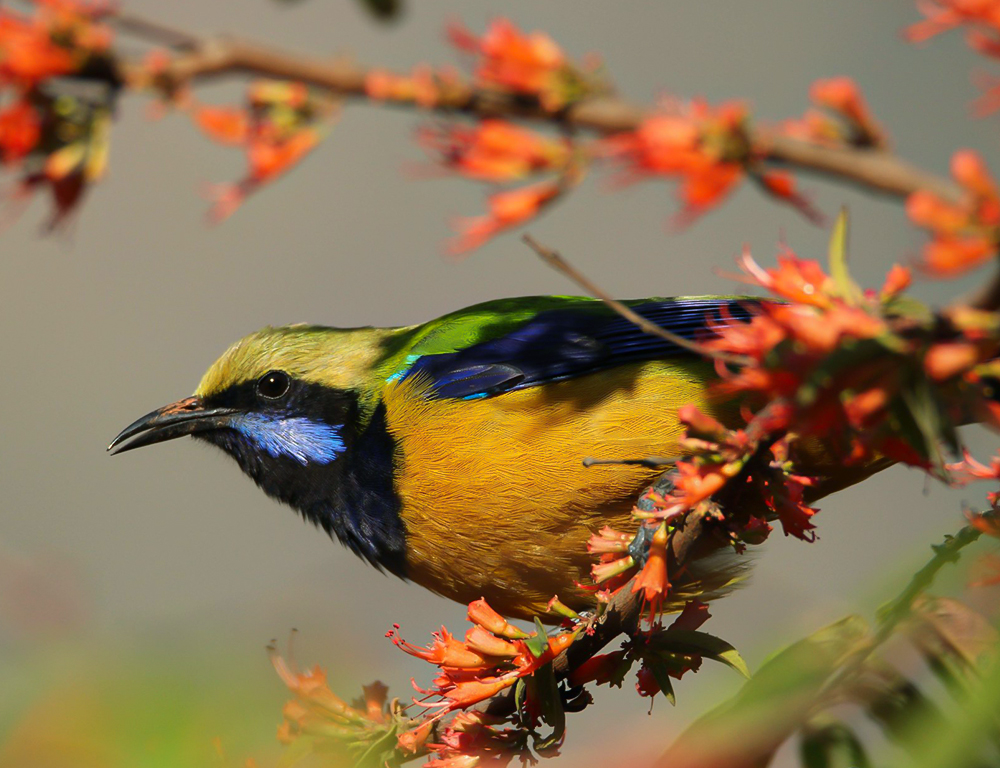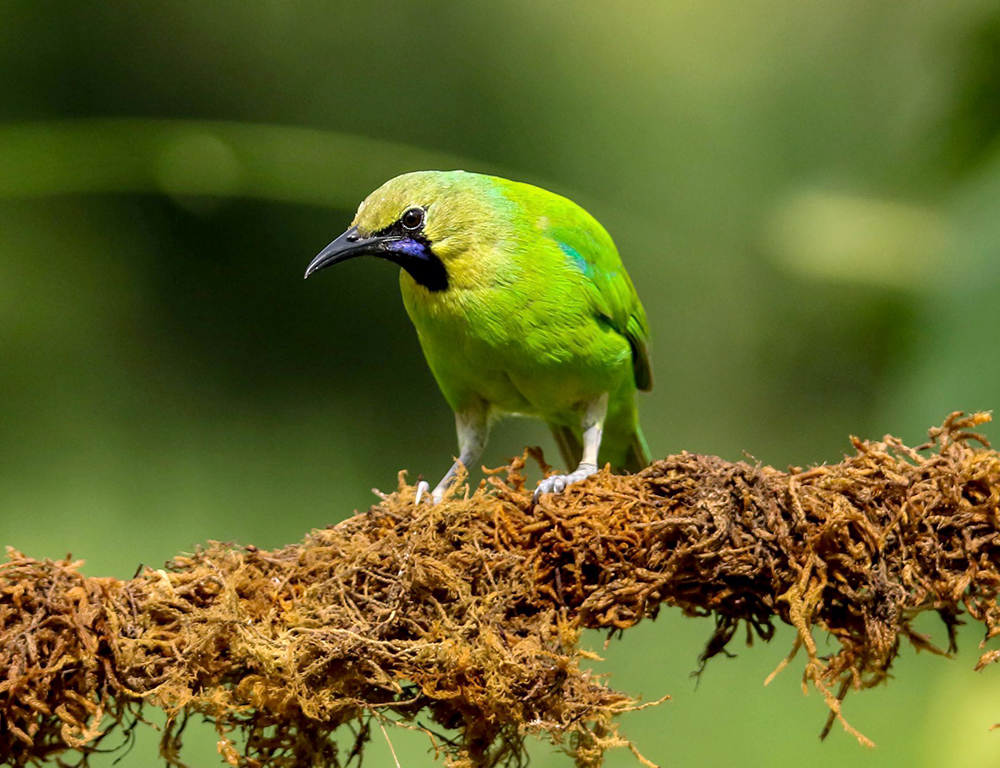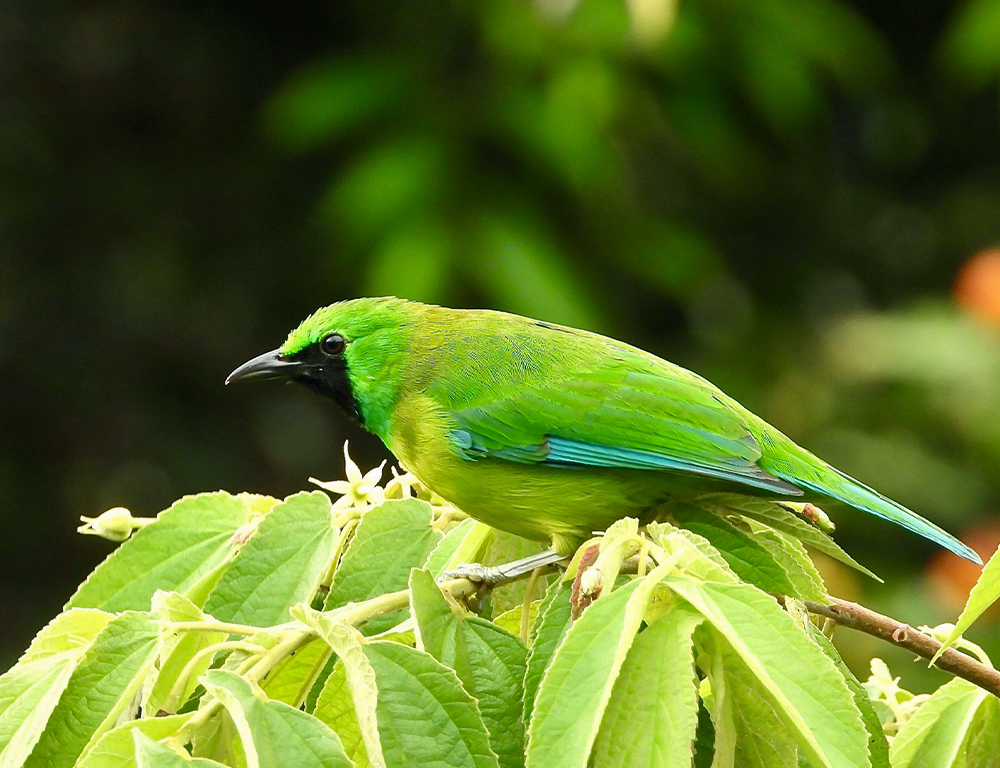Welcome to the captivating world of leafbirds! Often overshadowed by more exotic avian species, leafbirds emerge as charismatic gems with their vibrant colors and intriguing behaviors.
Native to the tropical regions of Asia, these birds possess a unique ability to blend seamlessly into their surroundings, adding an element of surprise to encounters in the wild.
Beyond their striking appearance, leafbirds exhibit distinct calls and breeding patterns that enhance their allure.
Join me as we delve deeper into the fascinating lifestyle of leafbirds, exploring their role in the bird kingdom and uncovering the beauty and complexity of these lesser-known avian wonders.
Whether you’re a seasoned bird-watcher or simply curious about nature’s marvels, prepare to be enchanted by the enchanting world of leafbirds.

Physical Characteristics of Leafbirds
Leafbirds are known for their striking physical characteristics, which make them stand out among other bird species. Here are some key features of leafbirds:
Size
Leafbirds are medium-sized birds, typically measuring between 15 and 21 centimeters (6 to 8 inches) in length.
Weight
They generally weigh between 20 to 60 grams, with variations depending on factors such as age, sex, and species.
Plumage
Their plumage is predominantly green, which helps them blend in with the foliage of their forest habitats. Male leafbirds often exhibit more vibrant and colorful plumage than females, with blue, yellow, and black hues on their wings and throat.
Females generally have more subdued coloration, often with shades of olive-green or yellowish-green.
Beak
Leafbirds have short, curved beaks that are well-suited for their omnivorous diet. Their beaks are used for feeding on fruits, berries, insects, and nectar. The curved shape of their beaks allows them to extract food from foliage and flowers efficiently.
Eyes
Leafbirds typically have dark-colored eyes, providing keen eyesight for foraging and detecting potential environmental threats.
Wings and Tail
Their wings are moderately sized, allowing them to maneuver adeptly through the dense vegetation of forest canopies. Leafbirds also have relatively long tails, which may aid in balancing and agility while flying and perching.
Vocalizations
Leafbirds are known for their melodic songs and various vocalizations, which they use for communication, mate attraction, and territorial defense. Each species of leafbird has its unique repertoire of calls and songs.
Habitat and Distribution of Leafbirds

Leafbirds are primarily found in the tropical regions of South and Southeast Asia. They inhabit various forested habitats, including evergreen, deciduous, and montane forests, secondary growth, scrublands, and gardens.
Here are some key points regarding the habitat and distribution of leafbirds:
Geographic Range
Leafbirds are distributed across various South and Southeast Asian countries, including India, China, Bangladesh, Myanmar, Thailand, Malaysia, Indonesia, and the Philippines.
Preferred Habitat
Leafbirds are arboreal birds, meaning they spend most of their time in trees. They are commonly found in dense forest canopies, where they forage for food and seek shelter.
However, if suitable food sources are available, they can also inhabit other vegetated areas, such as gardens, orchards, and parks.
Habitat Preferences by Species
While leafbirds share similar habitat preferences, different species may exhibit slight variations in their habitat use.
For example, some species may prefer specific types of forests, such as lowland or montane, while others may frequent more open habitats or urban areas.
Altitudinal Range
Leafbirds can be found at various elevations, ranging from lowland forests to higher elevations in mountainous regions. Their altitudinal distribution may vary depending on the species and the geographic location.
Types of Leafbirds
Leafbirds are a diverse group of birds belonging to the Chloropseidae family. While there are several species of leafbirds, some of the most well-known types include:
Blue-winged Leafbird (Chloropsis cochinchinensis)

Native to Southeast Asia, this species is known for its bright blue wings and green plumage. It inhabits forests and gardens and feeds on nectar and insects.
Golden-fronted Leafbird (Chloropsis aurifrons)

This species is found in parts of South and Southeast Asia, including India and Myanmar, with a golden-yellow patch on its forehead. It also inhabits forests and gardens and feeds on fruits, nectar, and insects.
Orange-bellied Leafbird (Chloropsis hardwickii)

This species is recognized by its orange belly in Bangladesh, Myanmar, and parts of Southeast Asia. It has a talent for mimicry and can imitate other bird calls perfectly.
Jerdon’s Leafbird (Chloropsis jerdoni)

Named after British ornithologist Thomas C. Jerdon, this species is primarily found in India and Sri Lanka. It has a distinctive call and is known for its colorful plumage.
Sumatran Leafbird (Chloropsis media)

Endemic to the island of Sumatra in Indonesia, this species has green plumage with a yellowish throat. It inhabits rainforests and montane forests.
Bornean Leafbird (Chloropsis kinabaluensis)

Found on the island of Borneo, this leafbird species has green plumage with a yellowish throat and breast. It inhabits montane forests and is known for its melodious song.
Leafbird Behavior
Leafbirds exhibit various fascinating behaviors that contribute to their survival and reproductive success.
Here are some key aspects of leafbird behavior:
Foraging Behavior
Leafbirds are primarily frugivorous, meaning they mainly feed on fruits and berries. They also consume insects, nectar, and occasionally small vertebrates.
Leafbirds use their specialized beaks to pluck fruits from trees and extract insects from foliage. They are adept at maneuvering through dense vegetation in search of food.
Vocalizations
Leafbirds are known for their diverse vocalizations, including melodious songs and various calls. These vocalizations serve multiple purposes, including communication between individuals, mate attraction, territorial defense, and warning of potential threats.
Each species of leafbird has its unique repertoire of vocalizations.
Breeding Behavior
During breeding, male leafbirds engage in elaborate courtship displays to attract females. These displays may include singing, displaying colorful plumage, and performing acrobatic maneuvers.
Once a pair bonds, they build a nest, typically constructed from twigs, leaves, and other plant materials. Female leafbirds lay eggs in the nest, and both parents participate in incubating the eggs and raising the chicks.
Social Behavior
Leafbirds are generally solitary or found in small family groups outside of the breeding season. However, they may congregate in larger groups during periods of abundant food resources, such as fruiting seasons.
Within their social groups, leafbirds may engage in vocalizing, foraging, and mutual grooming.
Migratory Behavior
While some leafbird species are resident throughout the year in their habitats, others may exhibit migratory behavior, particularly in response to seasonal food availability or climate changes. Migration patterns can vary among species and populations.
Conservation Efforts for Leafbirds

Conservation efforts for leafbirds primarily focus on protecting their habitats, addressing threats such as habitat loss and degradation, illegal trade, and climate change.
Here are some key conservation initiatives aimed at safeguarding leafbirds:
Habitat Protection
Conservation organizations work to establish protected areas, such as national parks, wildlife reserves, and forest reserves, where leafbirds and their habitats are legally protected from activities such as deforestation, logging, and land conversion.
These protected areas provide crucial habitat for leafbirds to thrive and reproduce.
Reforestation and Habitat Restoration
Reforestation projects aim to restore degraded habitats and create new forested areas suitable for leafbirds and other wildlife. By planting native tree species and restoring natural ecosystems, these initiatives help provide food, shelter, and nesting sites for leafbirds.
Combatting Illegal Trade
Poachers sometimes target leafbirds for the illegal pet trade or their feathers and other body parts.
Conservation organizations work with law enforcement agencies to crack down on illegal trade networks, enforce wildlife protection laws, and raise awareness about the negative impacts of wildlife trafficking on leafbird populations.
Community Engagement and Education
Conservationists engage with local communities living in and around leafbird habitats to promote sustainable land use practices, reduce human-wildlife conflicts, and raise awareness about the importance of conserving leafbirds and their ecosystems.
Community-based conservation initiatives may include environmental education programs, capacity building, and sustainable livelihood alternatives.
Research and Monitoring
Scientific research is crucial in understanding leafbird ecology, behavior, population trends, and threats.
Conservationists conduct population surveys, habitat assessments, and ecological studies to gather data on leafbird populations and inform conservation planning and management strategies.
International Collaboration
Leafbirds are distributed across multiple South and Southeast Asian countries, making international collaboration essential for their conservation.
Governments, non-governmental organizations, and researchers collaborate on regional conservation initiatives, sharing resources, expertise, and best practices to protect leafbirds and their habitats across borders.
Conclusion
Leafbirds are captivating creatures with their vibrant plumage, diverse diet, and unique behaviors. Their adept mimicry and crucial role in seed dispersal highlight their intelligence and ecological significance.
Despite facing threats such as habitat loss, illegal trade, and climate change, conservation efforts offer hope for their survival.
By supporting conservation initiatives, promoting sustainable practices, and raising awareness, we can protect these emerald gems for future generations.
Understanding and preserving leafbirds enriches our appreciation for the natural world and emphasizes the interconnectedness of all species in Earth’s intricate web of life.
Let us remember that even the smallest creatures, like the leafbird, play a vital role in maintaining the balance of our ecosystems.